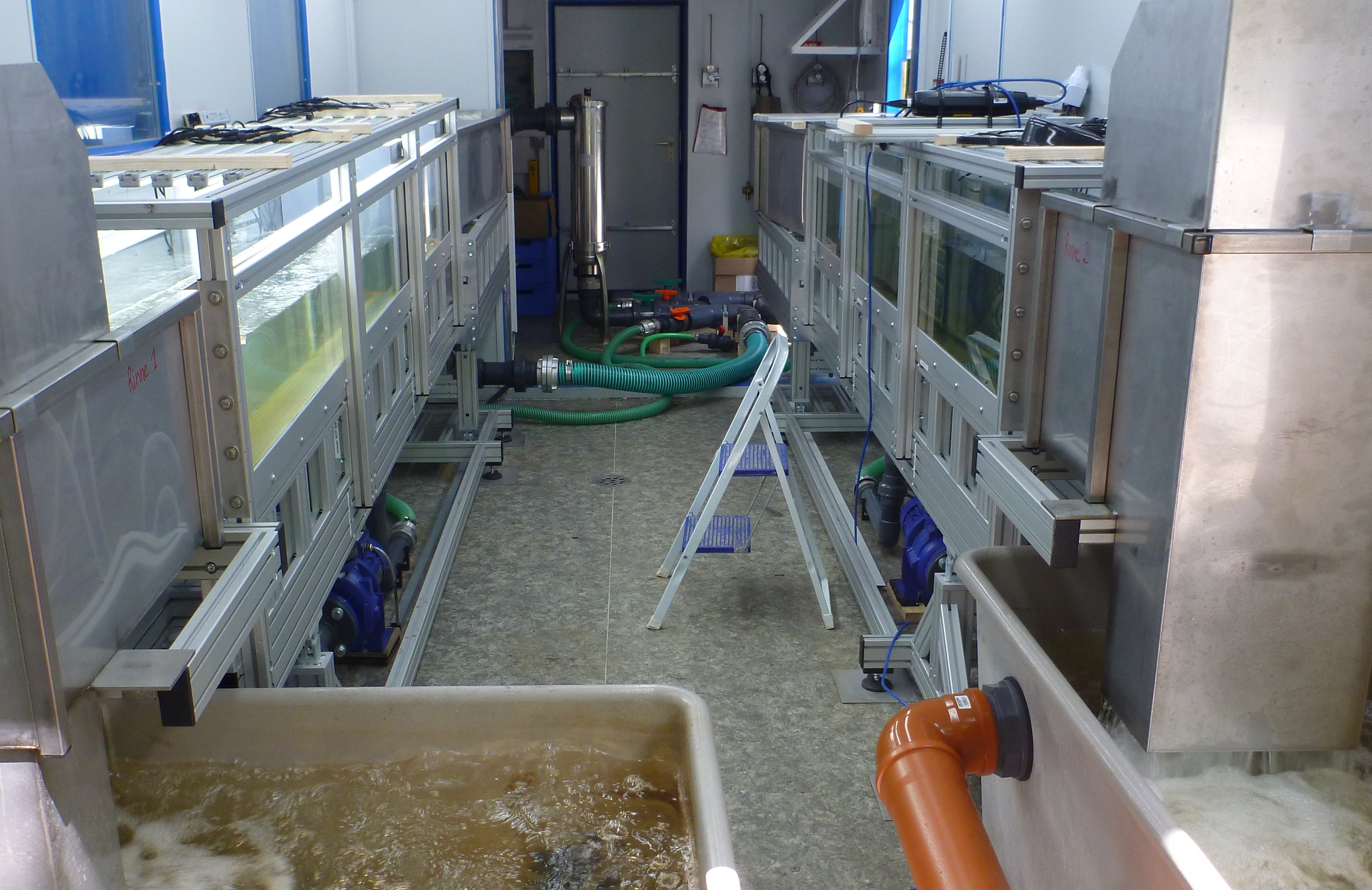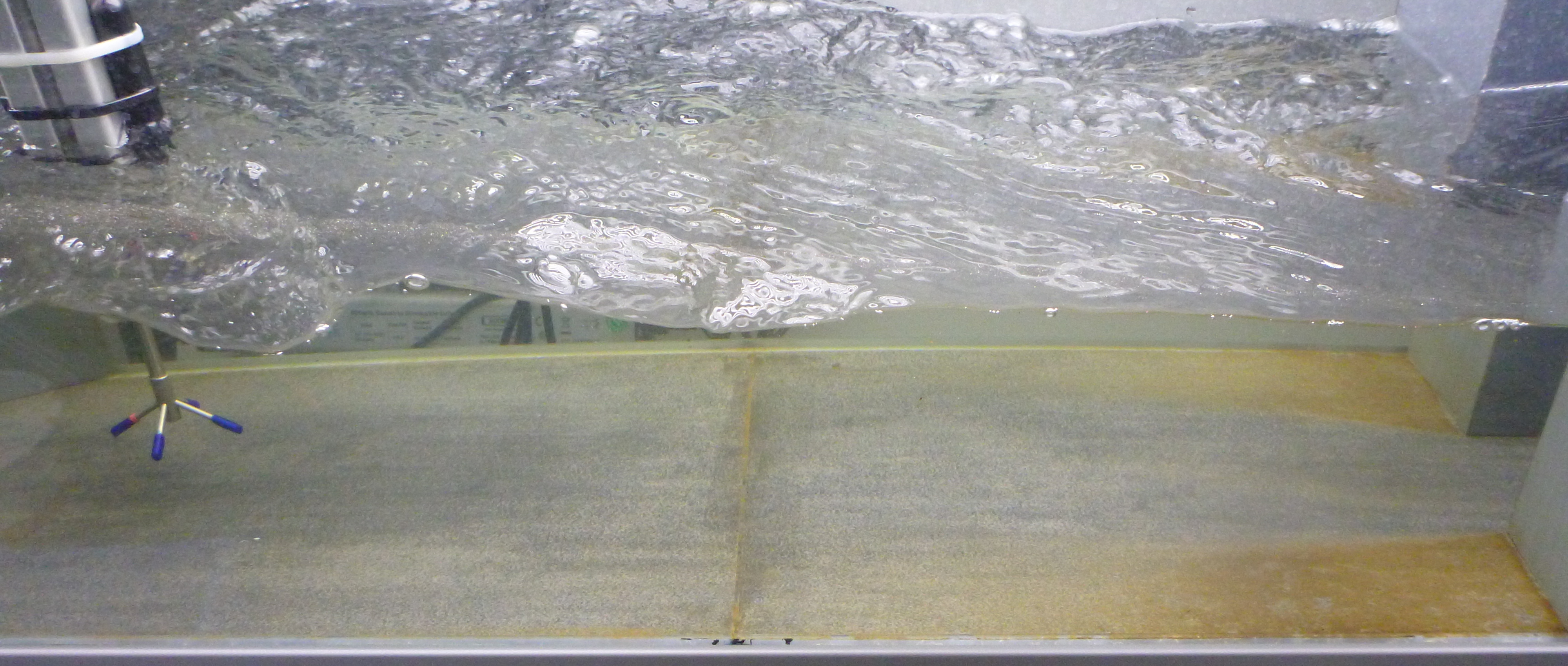BIOFLOW (DFG) - Interactions between flow hydrodynamics and biofilm attributes and functioning
Microbial biofilms constitute an integral part of lotic aquatic ecosystems and are controlled by factors such as light, grazing, resources and hydrodynamics. Detailed in-situ measurements of stream bed heterogeneity and associated development of flow fields in two mountainous streams (Harz region, Germany) revealed new insights in the role of near-bottom hydraulics on e.g. pigment composition, microbial community structure, biofilm morphology and ammonium uptake of stream biofilms. However, light and water level fluctuations under field conditions necessitate the confirmation of results in flume experiments where biofilms can develop at stable light conditions and discharge.
By performing flume experiments in the on-site mesocosm facilities MOBICOS placed adjacent to the studied stream, we are able to inoculate the flumes with the indigenous microbial assemblages also forming biofilms in the stream. The experimental setup comprises of two identical, tiltable flumes 5.70 m in length and 0.30 m wide. They are either fed by stream water or operated in recirculation mode with mean and turbulent velocities comparable to field conditions. A 3 m long section made of glass walls and bottoms enables sophisticated video-based measurement techniques to quantify flow fields above biofilms.
These experiments are part of the DFG-funded project BioFlow ‘Interactions between flow hydrodynamics and biofilm attributes and functioning in streams’, which is a joint project between the Helmholtz Centre for Environmental Research - UFZ (Magdeburg, Germany) and the University Koblenz-Landau (Landau, Germany). Flumes were jointly designed and constructed with the UFZ technical workshops.
For further details please contact:
- Prof. Dr. Markus Weitere (Head of project)
- Christine Anlanger (WP Hydrodynamics)
- Dr. Ute Risse-Buhl (WP Biofilms)


